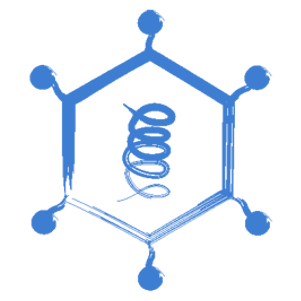|
|
| Line 8: |
Line 8: |
| | |logo =bugs-logo copy.png | | |logo =bugs-logo copy.png |
| | }} | | }} |
| − | [[Chlamydia Species - General Characteristics]]
| |
| − | ===Overview===
| |
| − |
| |
| − | *Host adapted and non-host adapted species varying in virulence for different hosts
| |
| − | *Species cause specific diseases in particular hosts
| |
| − | *Respiratory, enteric, pleural and reproductive diseases in animals and humans
| |
| − | *Conjunctivitis, arthritis, abortion, urethritis, enteritis, pneumonia, encephalomyelitis
| |
| − | *Manifestation varies from subclinical to severe systemic infections
| |
| − | *Intestinal infections often subclinical and persistent
| |
| − | *Human infections usualy acquired from infected birds, causing psittacosis or ornithosis, causing respiratory infections
| |
| − |
| |
| − |
| |
| − | ===Characteristics===
| |
| − |
| |
| − | *Obligate intracellular bacteria
| |
| − | *Gram negative bacteria with outer membrane, LPS, ribosomes, DNA and RNA
| |
| − | *Peptidoglycan cell wall resistant to lysozyme
| |
| − | *Only grow in presence of living eukaryotic cells
| |
| − | *Unable to synthesis ATP therefore require intermediates from host cells
| |
| − | *Not stained by Gram stain
| |
| − | *Two morphological forms
| |
| − | **Elementary body, the infective extracellular form, which is small, metabolically inert and osmotically stable; surrounded by cytoplasmic membrane, outer membrane with LPS, but no peptidoglycan
| |
| − | **Retiuculate body: larger, metabolically active, osmotically fragile
| |
| − | *Elementary body survives in the environment for several days
| |
| − |
| |
| − |
| |
| − | ===Pathogenesis and pathogenicity===
| |
| − |
| |
| − | *Elementary body enters host epithelial cells by receptor-mediated endocytosis
| |
| − | *Transformation into larger reticulate body within endosome; known as an inclusion
| |
| − | *Reticulate body divides by binary fission to form many new chlamydia cells
| |
| − | *Reticulate bodies mature and condense to form elementary bodies
| |
| − | *Elementary bodies released from dying host cells after about 72 hours to infect other cells
| |
| − | *Persistent infections can occur if replication delayed by environmental conditions such as presence of interferon gamma
| |
| − | *Many infections subclinical due to intracellular existence of ''chlamydia'' preventing inflammatory reactions
| |
| − | *Chronic infections may fail to induce an immune response, or may repeatedly stimulate the immune system, causing a delayed hypersensitivity reaction and tissue damage
| |
| − | *Prolonged faecal shedding of organisms
| |
| − | *Clinical infections occur in non-natural host species
| |
| − | *CLinical signs depend on route of infection and degree of exposure
| |
| − |
| |
| − | ===Diagnosis===
| |
| − |
| |
| − | *Direct microscopy of smears and tissues e.g. organs from aborted foetuses, liver/spleen from avian cases
| |
| − | *Kosters (modified Ziehl-Neelsen) stain of placental smears shows small red rods
| |
| − | *Blue inclusions in cytoplasm of Giemsa-stained cells
| |
| − | *Methylene blue stain with darkfield microscopy
| |
| − | *Fluorescent antibody stain
| |
| − | *Antigen detection kits for diagnosis from swabs
| |
| − | *ELISA to detect ''Chlamydophila'' LPS
| |
| − | *Isolation in embryonated eggs and McCoy cells as well as animal tissues
| |
| − | *PCR to detect chlamydial DNA
| |
| − | *Serological tests: complement fixation, ELISA, indirect immunofluorescence
| |
| − |
| |
| − |
| |
| − | *May cause [[Joints Inflammatory - Pathology#In Sheep|arthritis in sheep]] and [[Joints Inflammatory - Pathology#In Cattle|arthritis in cattle]]
| |
| − |
| |
| − | '''sheep'''
| |
| − | *[[:Category:Chlamydophila species|'''''Chlamydia sp.''''']]
| |
| − | **Sporadic or outbreaks of lamb polyarthritis
| |
| − | **High morbidity, low mortality
| |
| − | **Commonly together with conjunctivitis
| |
| − | **Most recover but may remain lame
| |
| − |
| |
| − |
| |
| − | '''cattle'''
| |
| − |
| |
| − | **[[:Category:Chlamydophila species|'''''Chlamydia sp.''''']]
| |
| − | ***Severe disease in young calves
| |
| − | ***High mortality
| |
| − | ***Can be seen in smears of synovial fluid from swollen joints
| |
| − | ***Oedematous and hyperaemic surrounding tissue
| |
| − | ***Possibly due to intrauterine infection
| |
| | | | |
| | | | |
| | [[Category:Bacterial Organisms]] | | [[Category:Bacterial Organisms]] |
| | [[Category:Gram_negative_bacteria]] | | [[Category:Gram_negative_bacteria]] |
| − | [[Category:To_Do_-_Bacteria]]
| |
